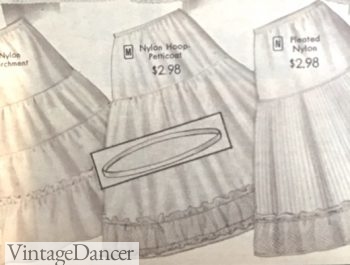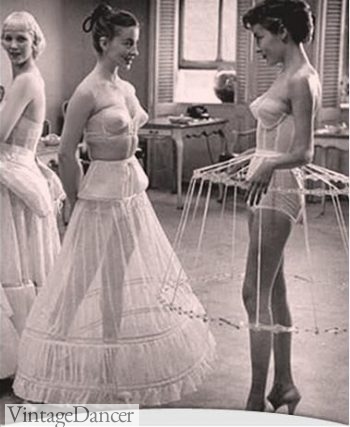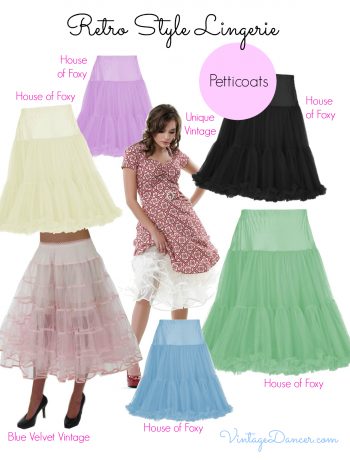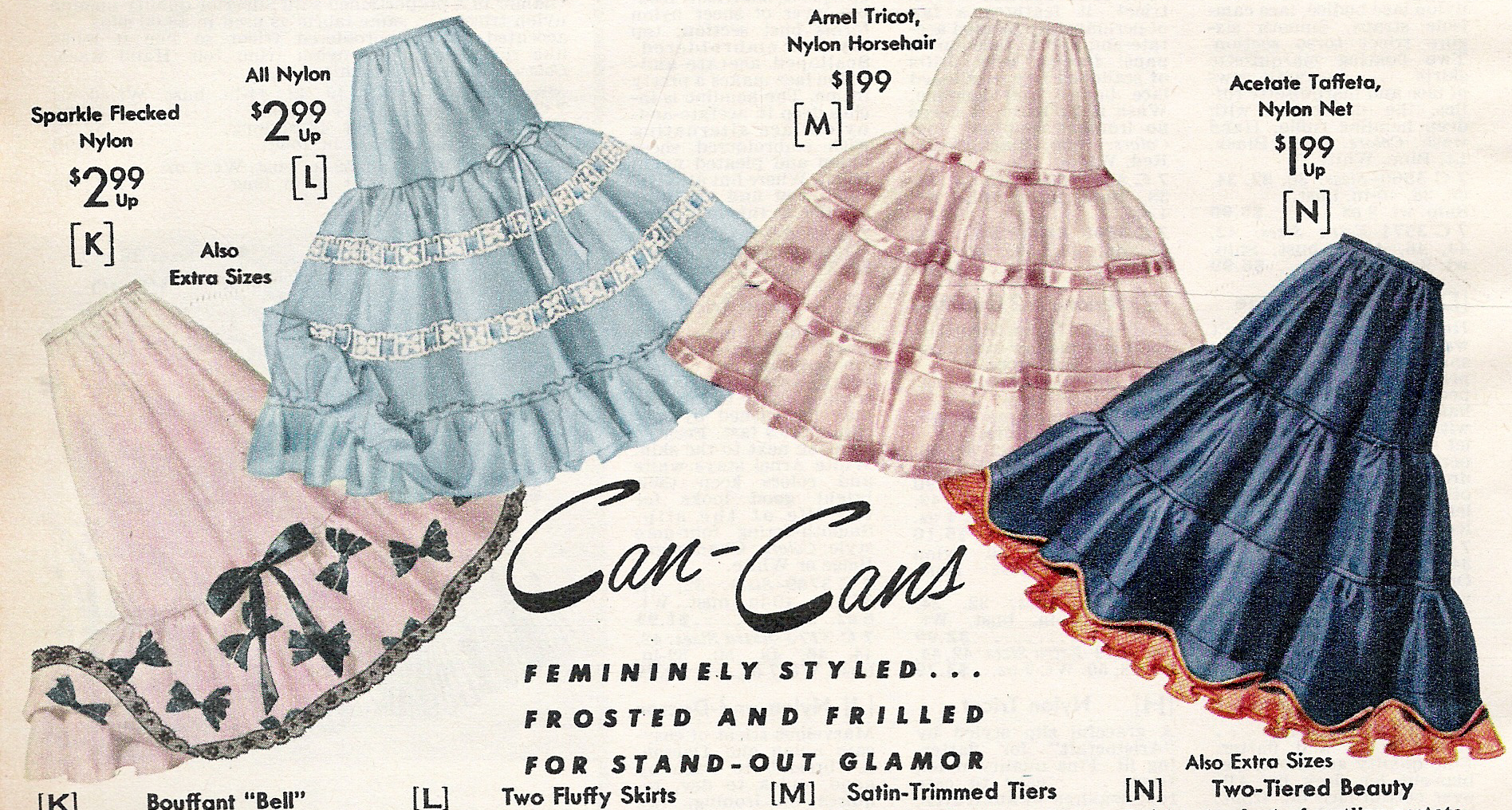
1950s petticoats crinoline skirts
I just can’t talk about the history of 1950s skirts and dresses without also discussing the petticoats and crinolines worn under them. The Paper Doll look of the fifties could not be achieved with simple cotton and lace slips. The five yard skirt needed five net petticoats to achieve the Victorian volume that the doll look required.
Five petticoats? You may think I am kidding, but I am not. Five petticoats made of 100 yards of net each was uncommon, but not unheard of.
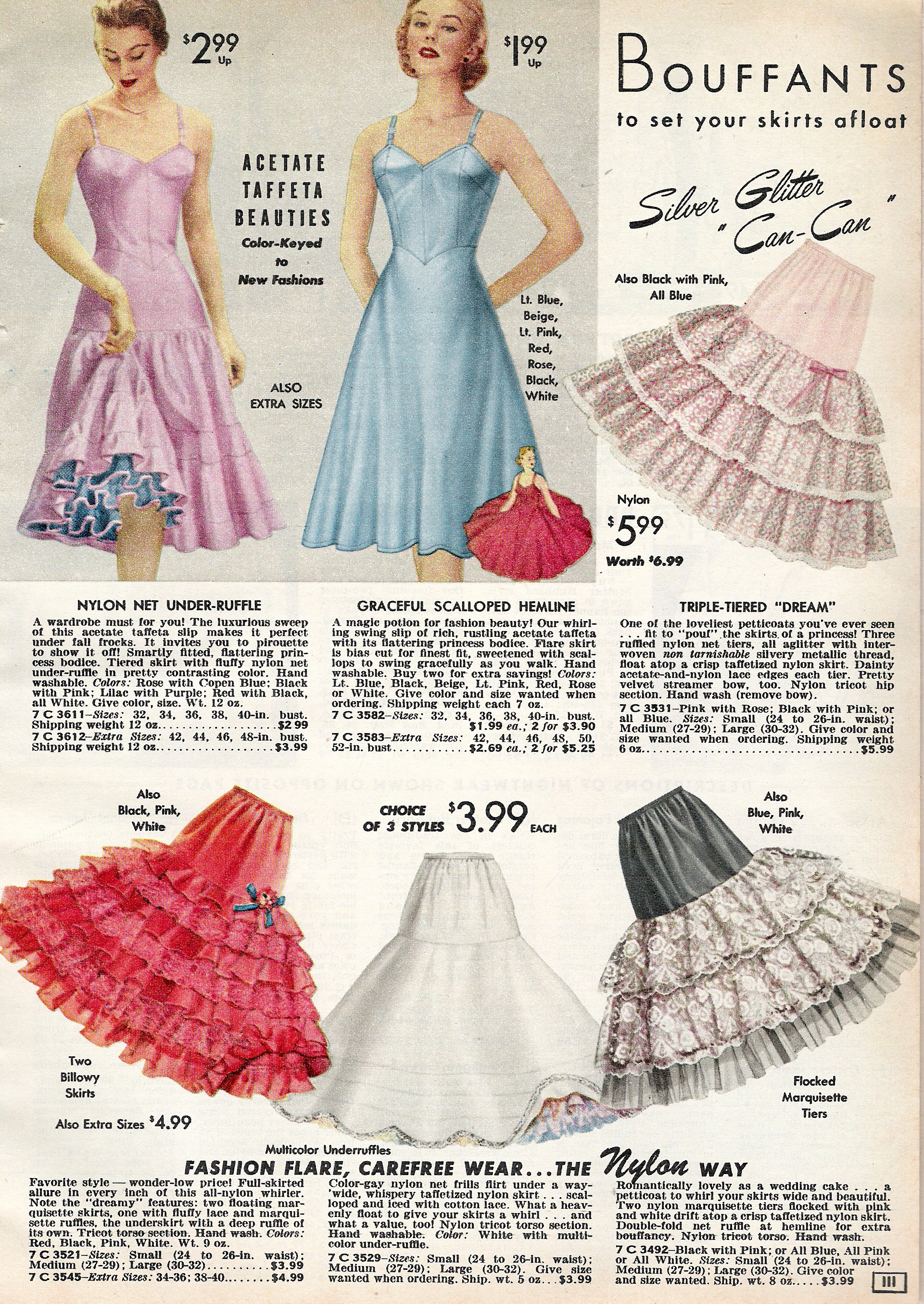
1957 petticoat slips and skirts
100 years earlier, women used layers of cotton, horse hair, and rope-lined hoop skirts and petticoats to create volume. In the 1950s, they did the same.
Netting was a newer invention that was lighter and more airy, requiring less petticoats, but it was also itchy and very prone to flattening out with wear. Net needed to be stiff, and so women’s popular magazines dished out plenty of advice on how to keep them stiff.
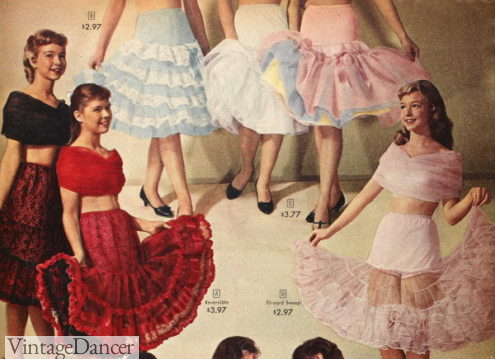
1959 teen petticoats
Starching crinolines with liquid and or spray starch was one technique. Pressing while damp was another. Ironing wax paper over net was a creative use of home supplies. Using shellac over a blotter was extreme, but hey, it did work. The stiffer the net, the more scratched ladies’ legs or nylons became — this is what women remember the most about petticoats in the 1950s.
“I remember wearing lots petticoats. Starched horse hair petticoats. My mother starched them and dried them in the kitchen on newspapers.
I had a clock skirt – felt circle skirt with a clock design ala poodle skirts. ” – msrie“I dipped my petticoats in pure starch, squeezed it out and dipped the next one! Usually the bottom one just got a light starch so it would not scratch as much. The next three or four got pure starch. Then when dry you pulled apart the layers so they stood out more. The starch lasted a long time because we just poured it back into the bottle after squeezing the petticoats. Starch came in gallon jugs then.
The top petticoat was always a really pretty one of taffeta that my Mom made for me. The taffeta ones were pretty enough to wear as a skirt but I never did. I liked them because they rustled when I walked or danced.
The funny thing about the full petticoats is that the next day we were just as apt to wear a really tight skirt. ” Barbara (Madame Hatsey- store closed)
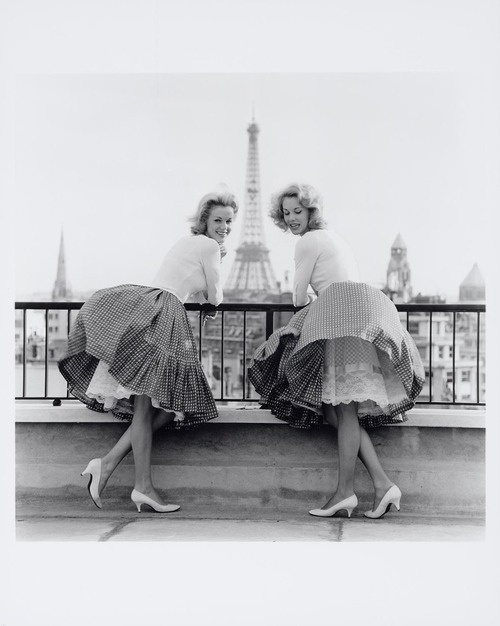
Watch out for Flying Skirts
All that work of keeping the petticoats fluffy and full was a big job. The hoop skirt, another Victorian invention, seemed like a better option. It was less prone to flattening out and easy to wash and re-thread the hoops, but it had its own problems.
Hoops do not bend through narrow doorways, down aisles, or into car doors very well. To even walk in them required learning to glide along so as not to sway the skirt back and forth like ringing a bell.
Winter cold weather meant icy cold drafts up the legs, but it was worth if it achieved the perfect look. If a woman sat wrong or it was windy and the skirt blew up in her face…. mortification for life!
The dangers of wearing a hoop were plenty, yet they were worn by some along with a petticoat or two on top to avoid showing any hoop lines through the skirt.
- Petticoat with optional hoop
- 1952, long hoop skirts
“I did have a hoop at one time but it was a cage hoop that had several loops. The idea seemed to be that you could remove some of them to create different styles. The ends slid together and went through casings. I was a dancing fool and–you guessed it–one of the casings slipped out at the ends. It just kept sliding until it was coiled. ” – Barbara
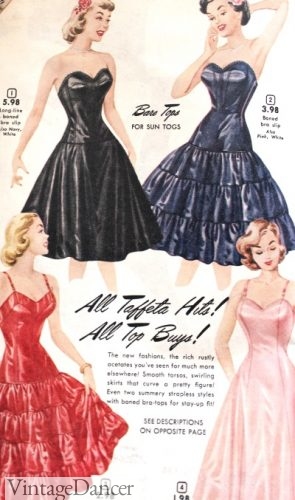
Taffeta petticoats
1950s petticoats and hoop skirts came in several lengths. The shortest was the knee length skirt. It was designed to end about two inches above the edge of the skirt.
To have a petticoat show beneath the skirt or dress was a fashion faux pax. If this were to happen a friend might say “It’s snowing down south,” a polite old phrase indicating a visible white slip.
The other popular length was the tea length for longer mid shin length skirts. There were also full length petticoats and hoops for floor length ballgown skirts and dresses, too.
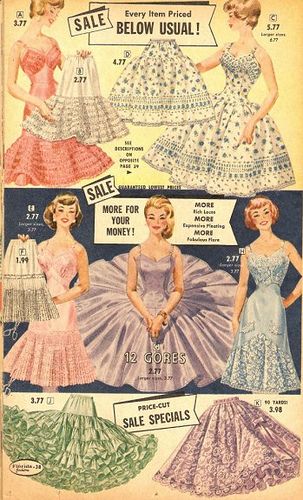
Early 50’s Crinoline and Slips
Besides a full petticoat many women only wore a long slip or half skirt slip, with a lace hem or ruffle hem for a bit of fullness. These basic slips were more useful for doing housework in. The full petticoat was saved for going out. Read more about 1950s slips in the history of 1950s lingerie article.
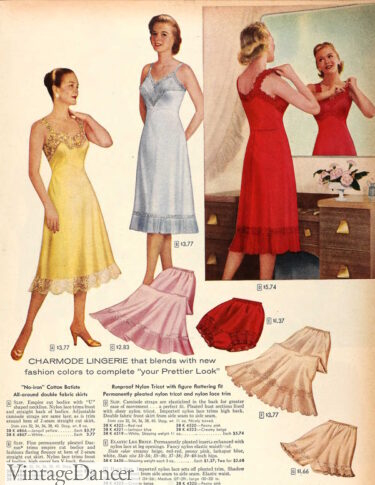
1957 full and half slips
1950s Petticoats and Crinolines for Sale
You can still buy 1950s vintage petticoats and crinolines. Both Etsy.com and eBay.com are good places to start online. I found mine at a vintage thrift store. I love the softer feel of vintage net over most modern reproductions crinolines, but the cost is usually better with reproductions. Some of the softest repro brands are Malco Modes, Banned, and Tatyana. Cheaper petticoats will be scratchy on the skin.
There are many other styles available, too. Short, fluffy ones, for modern neo-fifties dresses, tea length crinolines for vintage 50s dresses and thinner petticoats for just a little fluff. Whatever your needs may be, there is a petticoat for your skirt or dress.
Shop all of these petticoats and more on the 1950s Style Petticoat and Crinolines page:
Debbie Sessions has been teaching fashion history and helping people dress for vintage themed events since 2009. She has turned a hobby into VintageDancer.com with hundreds of well researched articles and hand picked links to vintage inspired clothing online. She aims to make dressing accurately (or not) an affordable option for all. Oh, and she dances too.
